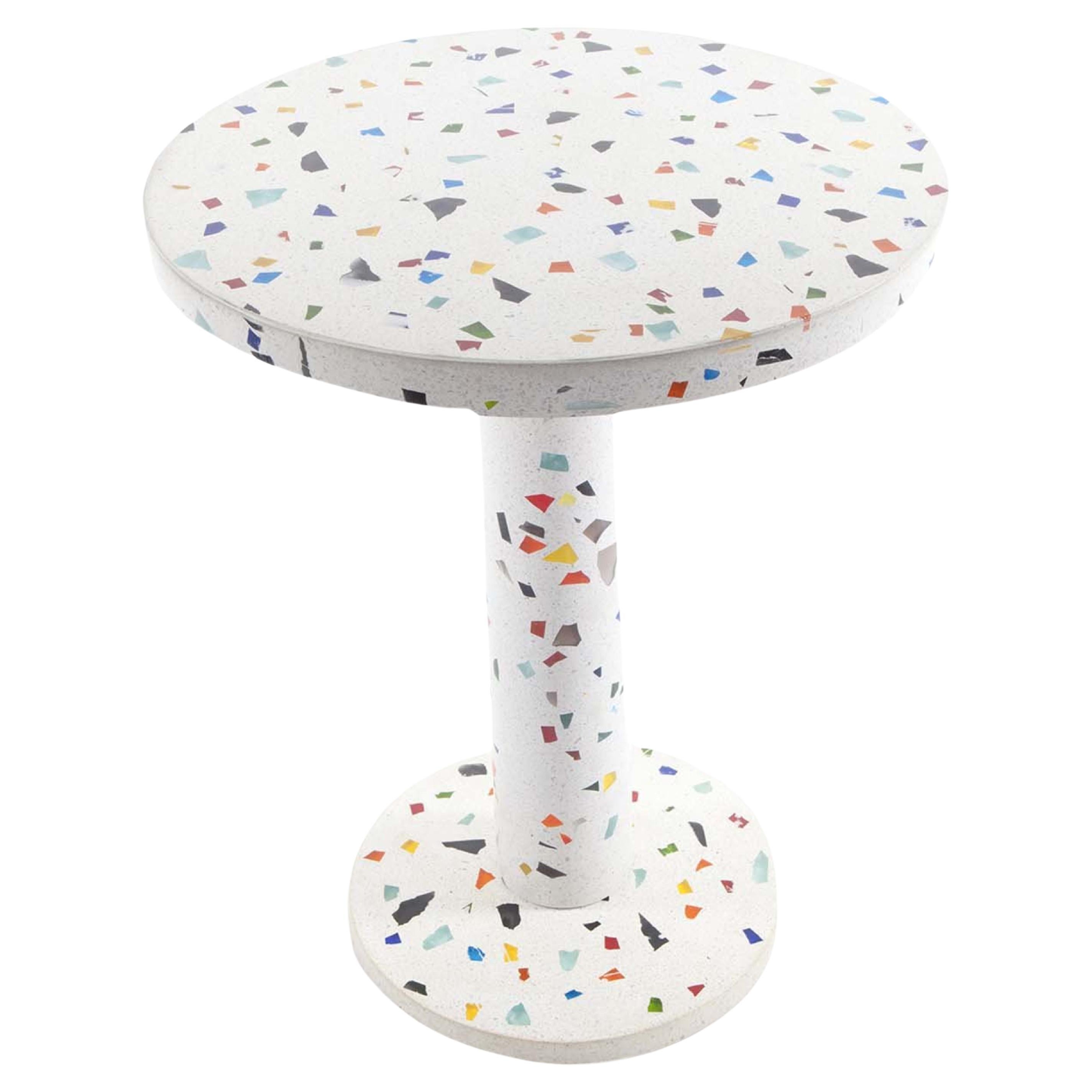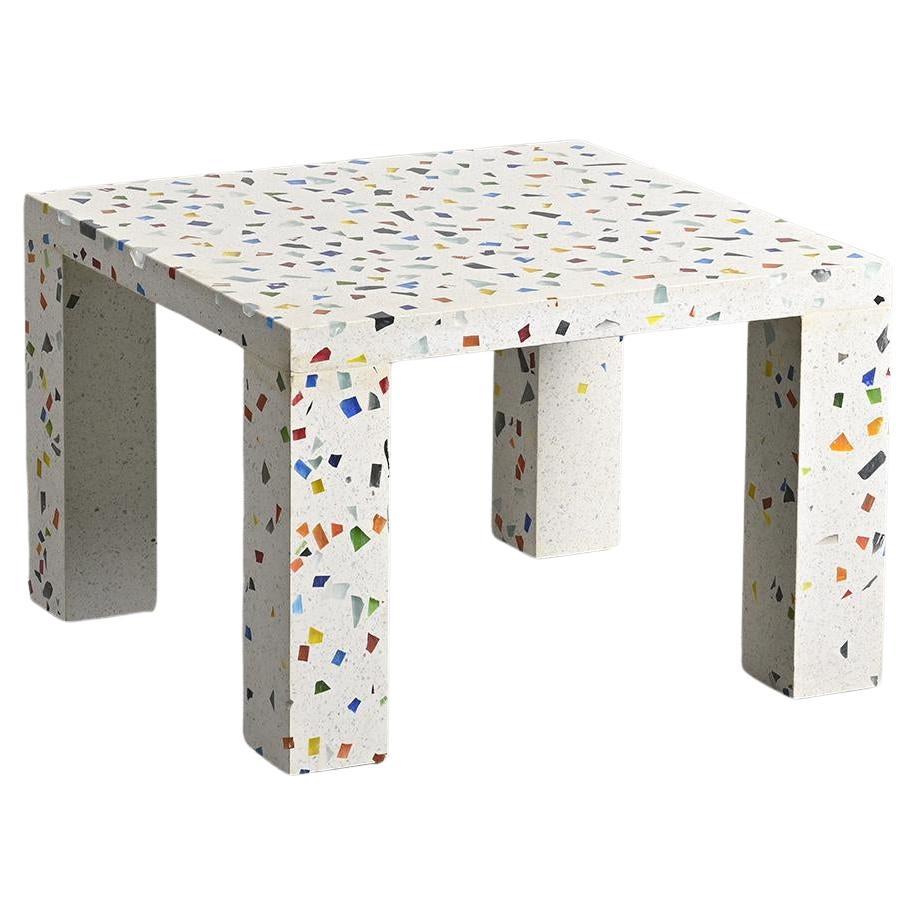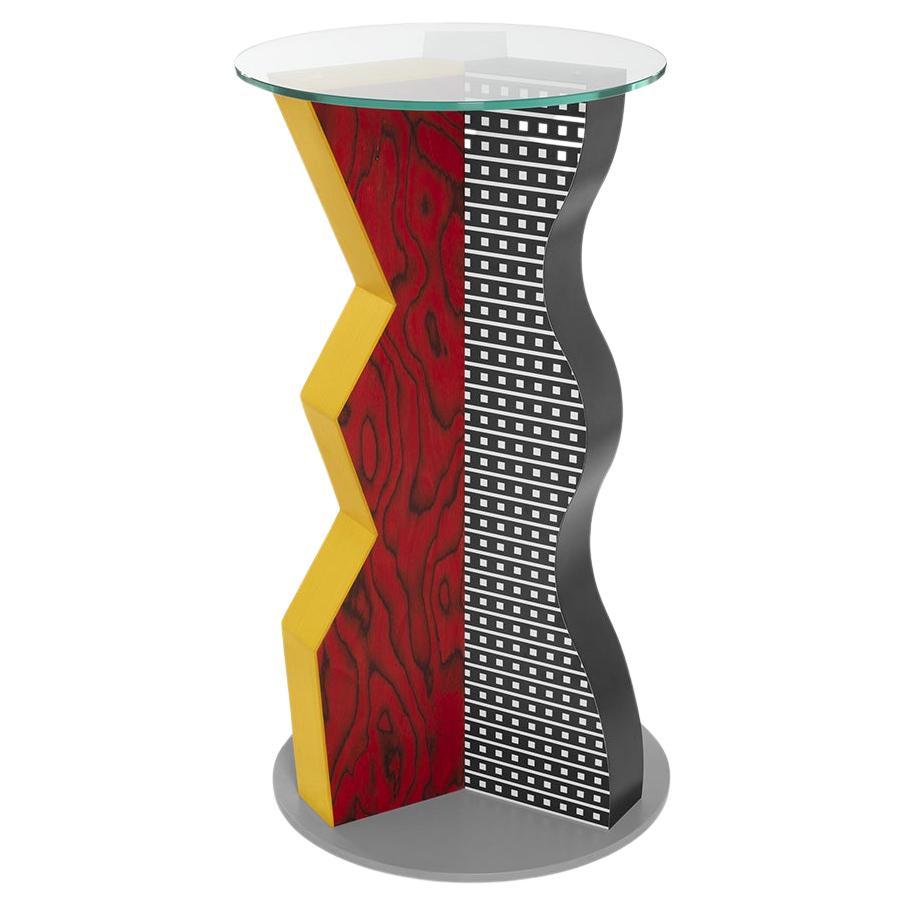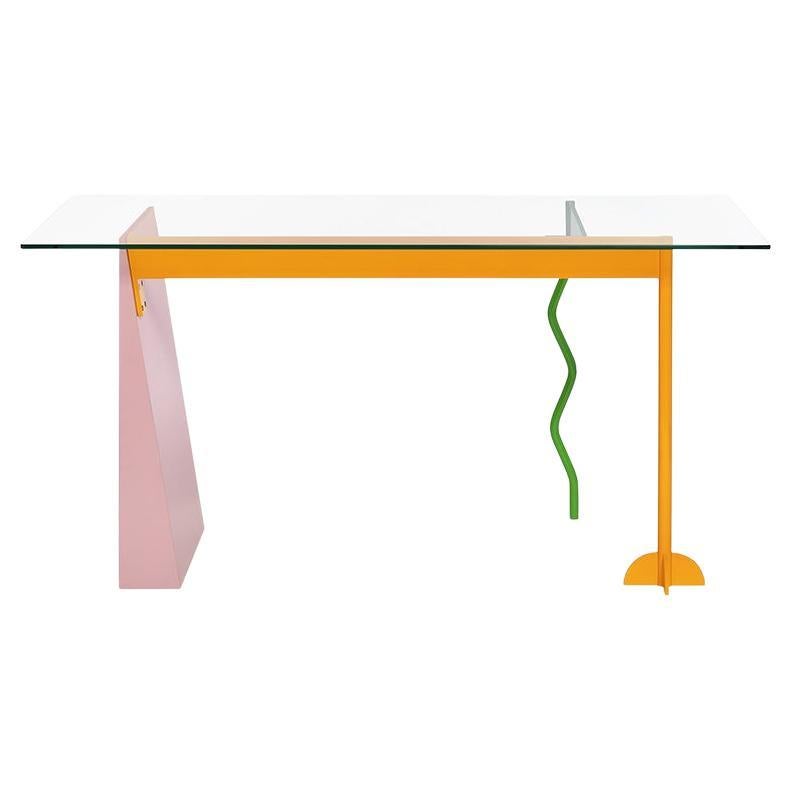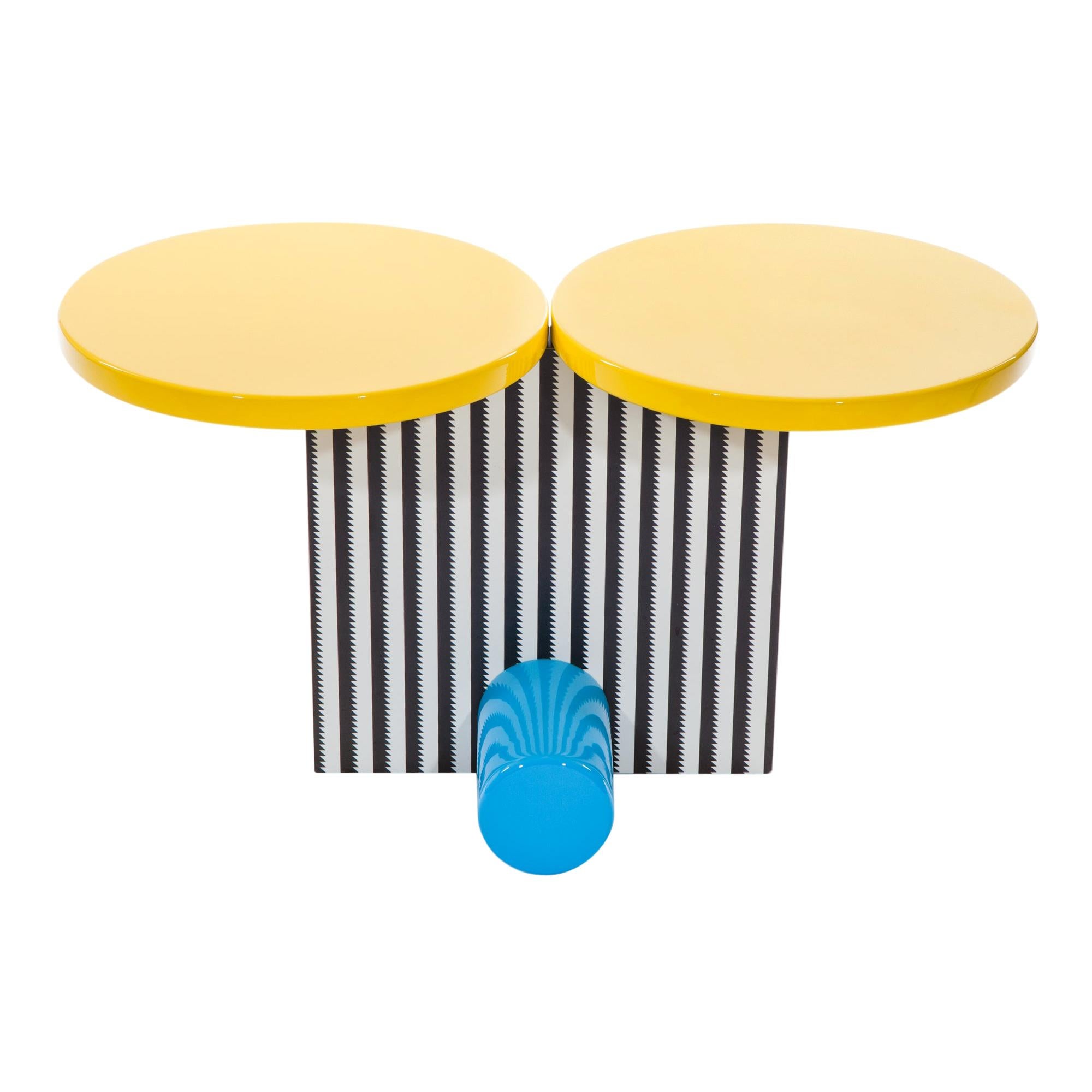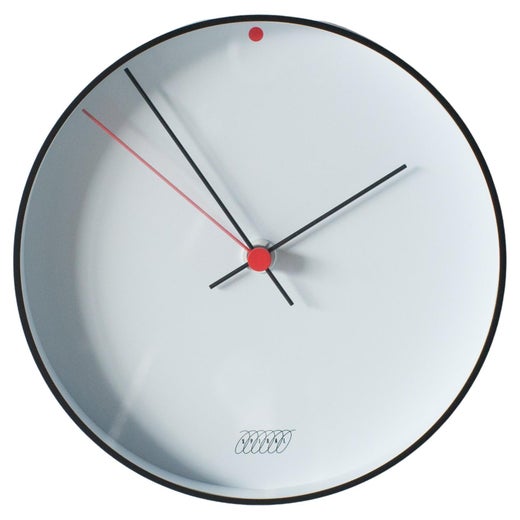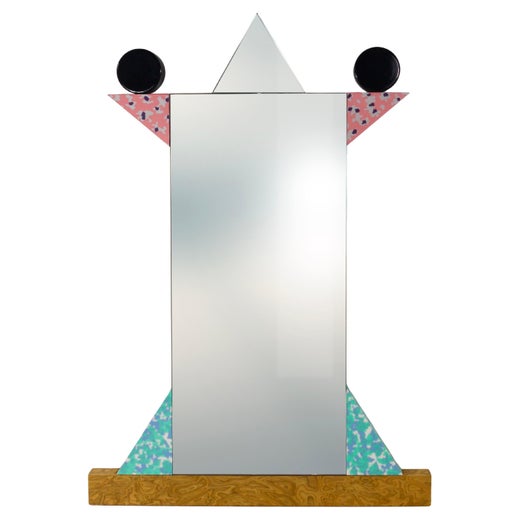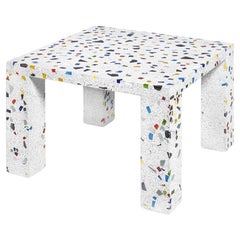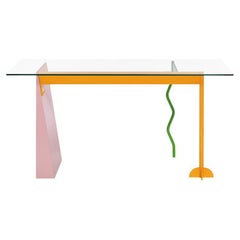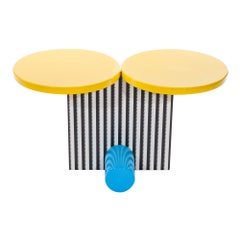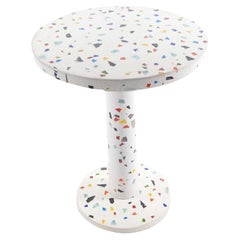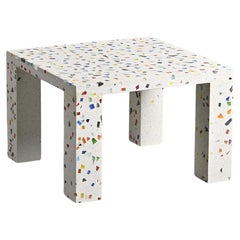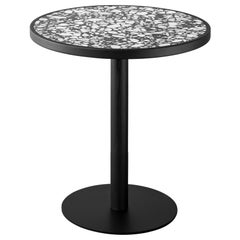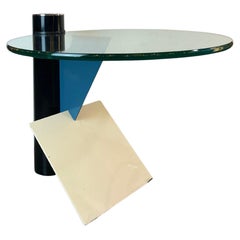Kyoto Metal and Terrazo End Table, by Shiro Kuramata for Memphis Milano Collect.
About the Item
- Creator:
- Dimensions:Height: 27.56 in (70 cm)Diameter: 23.63 in (60 cm)
- Style:Modern (In the Style Of)
- Materials and Techniques:
- Place of Origin:
- Period:
- Date of Manufacture:Contemporary
- Production Type:New & Custom(Current Production)
- Estimated Production Time:15-16 weeks
- Condition:
- Seller Location:La Morra, IT
- Reference Number:Seller: 180830491stDibs: LU4830117349022
Shiro Kuramata
Few designers have blended Minimalism and Surrealism into artistic furniture as successfully as Shiro Kuramata. His experimentation with form, function, color and motif informed cabinets, chairs and side tables that are as mystifying as they are visually striking.
Born in Tokyo in 1934, Kuruamata studied at the Kuwasawa Design School. In the 1970s and ’80s, he explored industrial materials in his designs. Inspired by Italian architect and designer Ettore Sottsass, Kuramata produced irreverent and bold work. In 1981, Kuramata joined Sottsass in his founding of the Memphis Group, named for a Bob Dylan song. The Milan-based collective aimed to turn the status quo on its head and redefine what was considered appealing in modern furniture style.
His experience with the Memphis Group led Kuramata to embrace unconventional optical effects. No piece embodies this more skillfully than the Miss Blanche chair. Crafted with transparent resin and flecked with rose-petal flecks, it gives the illusion that the sitter is floating.
The How High the Moon armchair is a prime example of his playful nature and willingness to challenge the expectations for furniture design. Including shards of colored glass in concrete surfaces, his “star piece” material was prevalent throughout his work, giving the tops of his end tables and coffee tables a brazen, gem-encrusted appearance. His daring approach to design can also be seen in pieces like his sheer glass bookcases with their seemingly fragile shelves.
Kuramata created many visual delights before his death in 1991. His work is in the collections of the Museum of Modern Art and Metropolitan Museum of Art in New York. His pieces remain highly prized by collectors and design enthusiasts worldwide.
On 1stDibs, explore a selection of vintage Shiro Kuramata seating, storage pieces, decorative objects and more.
Memphis Group
To many people, postmodern design is synonymous with the Memphis Group. This Italian collaborative created the most radical and attention-getting designs of the period, upending most of the accepted standards of how furniture should look.
The Memphis story begins in 1980, when Ettore Sottsass, then a beacon of Italian postmodernism, tapped a coterie of younger designers to develop a collection for the Milan Furniture Fair the next year, determined that all the new furniture they were then seeing was boring. Their mission: Boldly reject the stark minimalism of the 1970s and shatter the rules of form and function. (Sottsass’s Ultrafragola mirror, designed in 1970, embodied many of what would become the collective’s postmodern ideals.)
The group decided to design, produce and market their own collection, one that wouldn’t be restricted by concerns like functionality and so-called good taste. Its debut, at Milan’s 1981 Salone del Mobile, drew thousands of viewers and caused a major stir in design circles.
So as a record of Bob Dylan’s “Stuck Inside of Mobile” played on repeat, they took their name from the song, devised their marketing strategy and plotted the postmodern look that would come to define the decade of excess — primary colors, blown-up proportions, playful nods to Art Deco and Pop art. A high-low mix of materials also helped define Memphis, as evidenced by Javier Mariscal’s pastel serving trays, which feature laminate veneer — a material previously used only in kitchens — as well as Shiro Kuramata’s Nara and Kyoto tables made from colored glass-infused terrazzo.
An image of Sottsass posing with his collaborators in a conversation pit shaped like a boxing ring appeared in magazines all over the world, and Karl Lagerfield furnished his Monte Carlo penthouse entirely in Memphis furniture. Meanwhile, members like Andrea Branzi, Aldo Cibic, Michele de Lucchi, Nathalie du Pasquier, Kuramata, Paola Navone, Peter Shire, George Sowden, Sottsass and his wife, journalist Barbara Radice, went on to enjoy fruitful careers.
Some people think of the Milan-based collective as the design equivalent to Patrick Nagel’s kitschy screenprints, but for others Memphis represents what made the early 1980s so great: freedom of expression, dizzying patterns and off-the-wall colors.
Eventually, the Reagan era gave way to cool 1990s minimalism, and Memphis fell out of fashion. Sottsass left the group in 1985, and by 1987, it had disbanded. Yet decades later, Memphis is back and can be traced to today’s most exciting designers.
“As someone who was born in the 1980s, Memphis at times feels like the grown-up, artsy version of the toys I used to play with,” says Shaun Kasperbauer, cofounder of the Brooklyn studio Souda. “It feels a little nostalgic, but at the same time it seems like an aesthetic that’s perfectly suited to an internet age — loud, colorful and utilizing forms that are graphic and often a little unexpected.”
Find a collection of vintage Memphis Group seating, tables, decorative objects and other furniture on 1stDibs.
- ShippingRetrieving quote...Shipping from: La Morra, Italy
- Return Policy
More From This Seller
View All2010s Italian Serving Tables
Concrete
21st Century and Contemporary Italian Modern Side Tables
Glass, Plastic
21st Century and Contemporary Italian Modern Side Tables
Metal
21st Century and Contemporary Italian Modern Tables
Plastic
21st Century and Contemporary Italian Modern Side Tables
Wood, Plastic
21st Century and Contemporary Italian Modern Side Tables
Wood, Plastic
You May Also Like
2010s Italian Side Tables
Metal
Late 20th Century Italian Post-Modern Coffee and Cocktail Tables
Concrete
21st Century and Contemporary Italian Modern Tables
Ash
Vintage 1980s Italian Post-Modern Side Tables
Steel, Chrome
2010s Italian Mid-Century Modern Side Tables
Plastic, Fiberglass, Lacquer
2010s American Modern Side Tables
Marble, Granite, Metal
